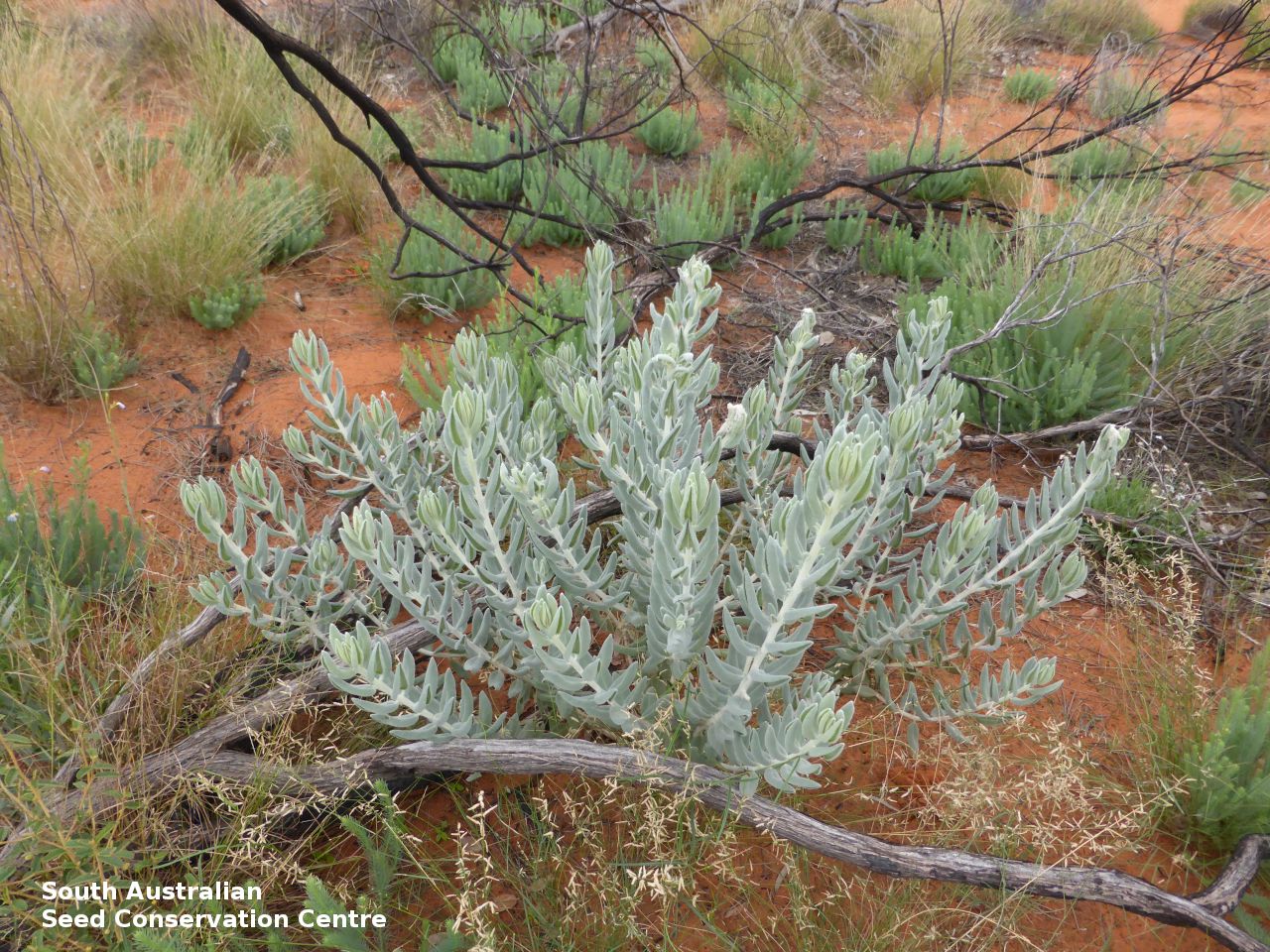



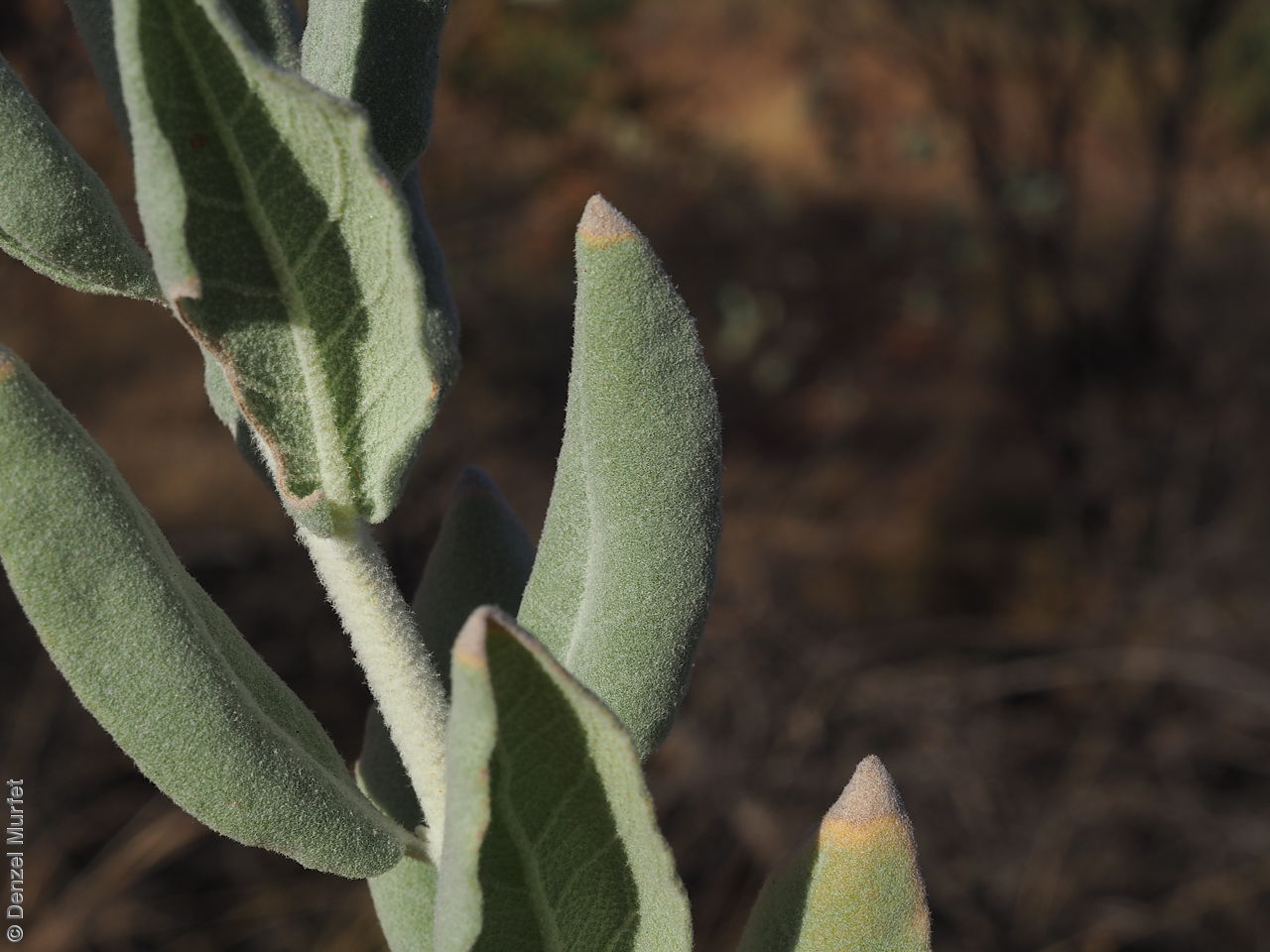
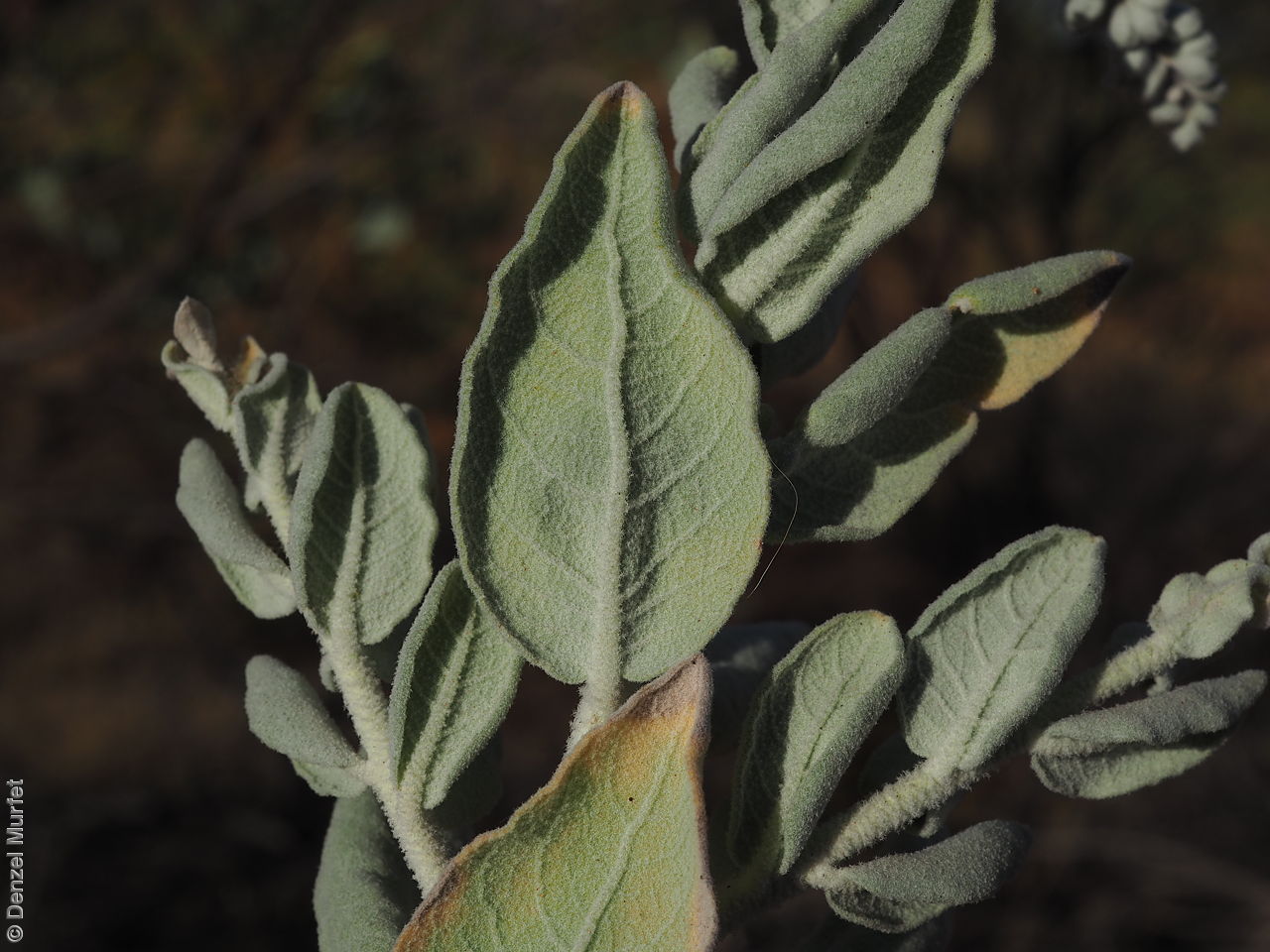


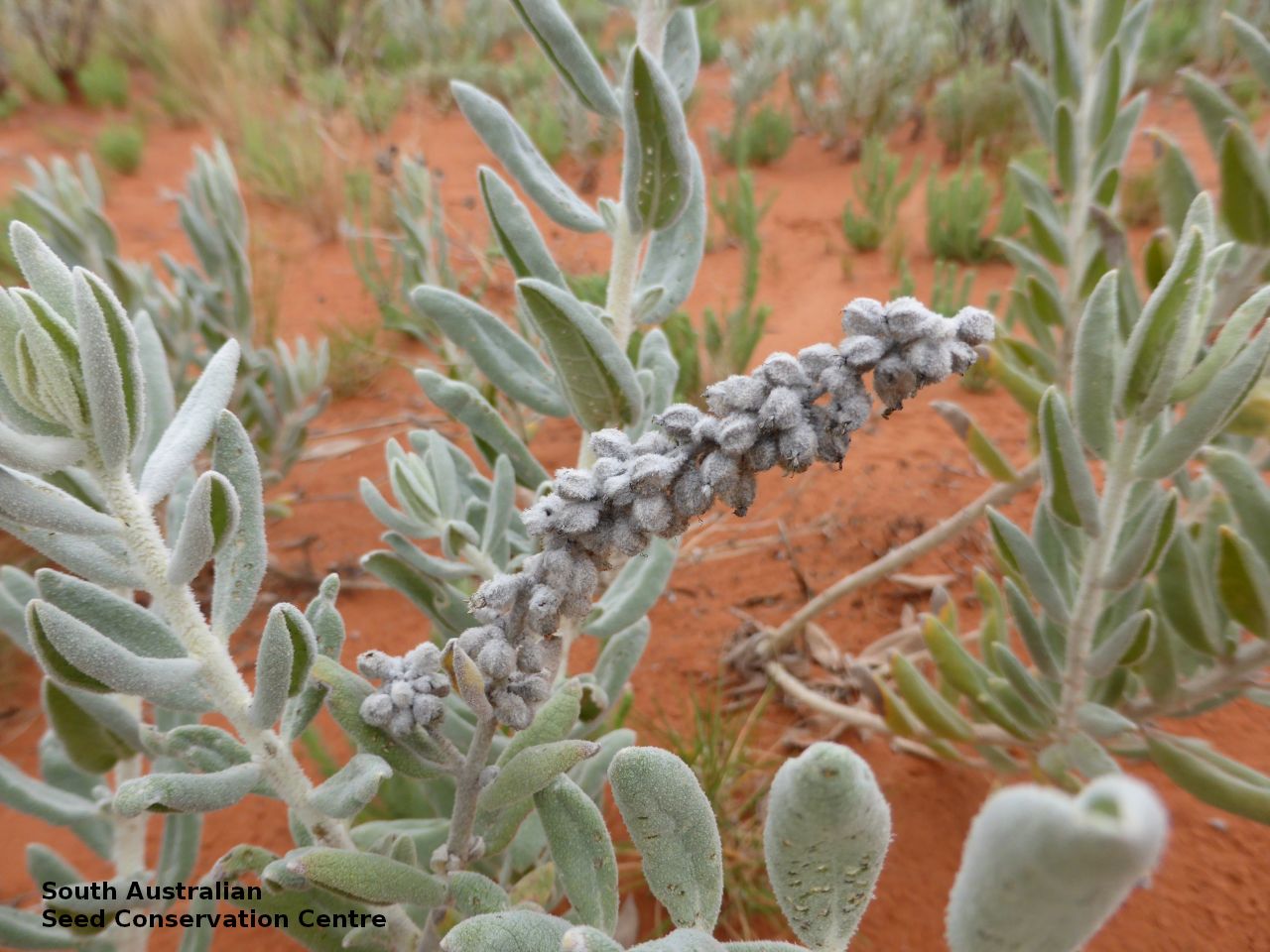
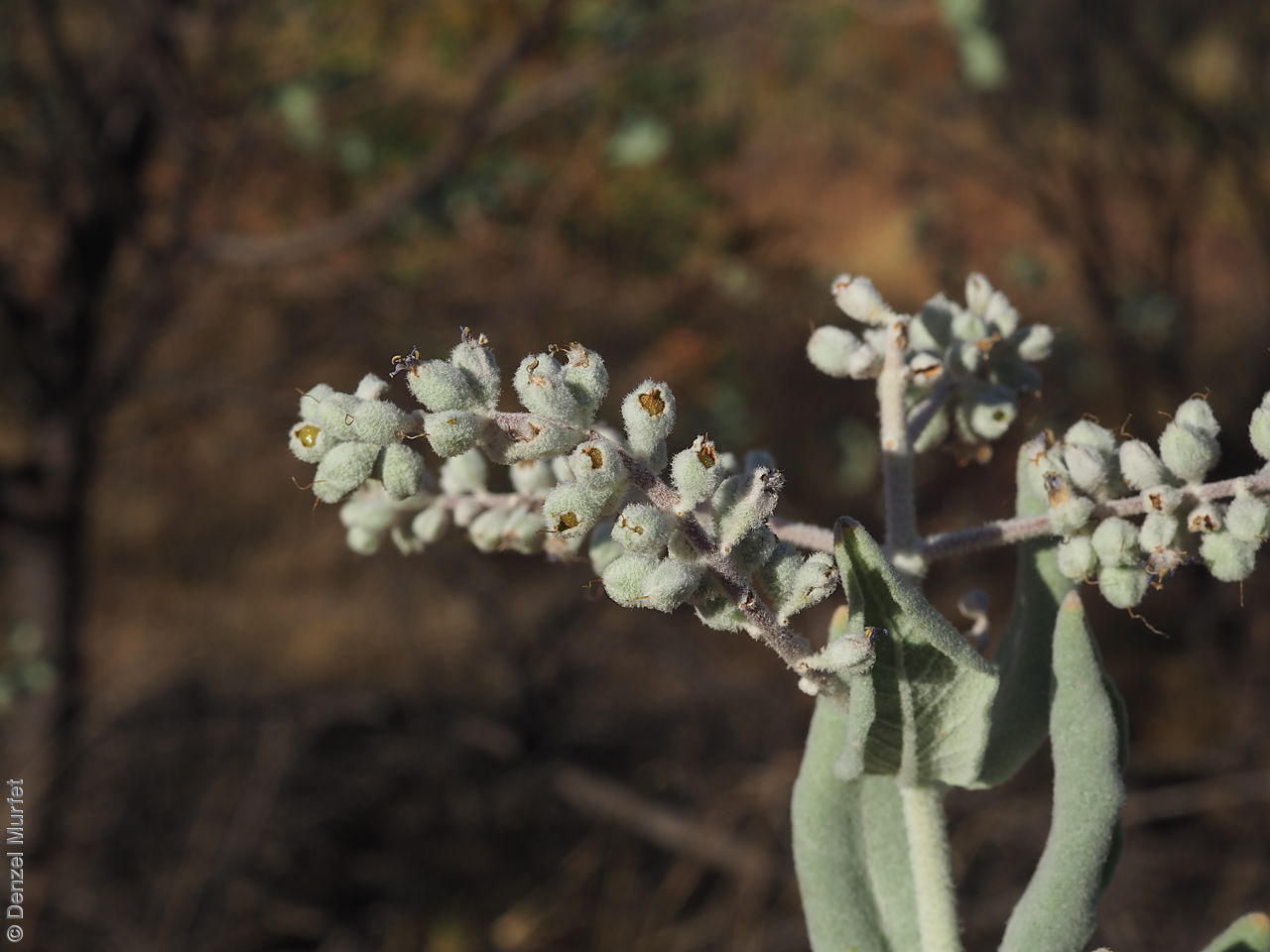

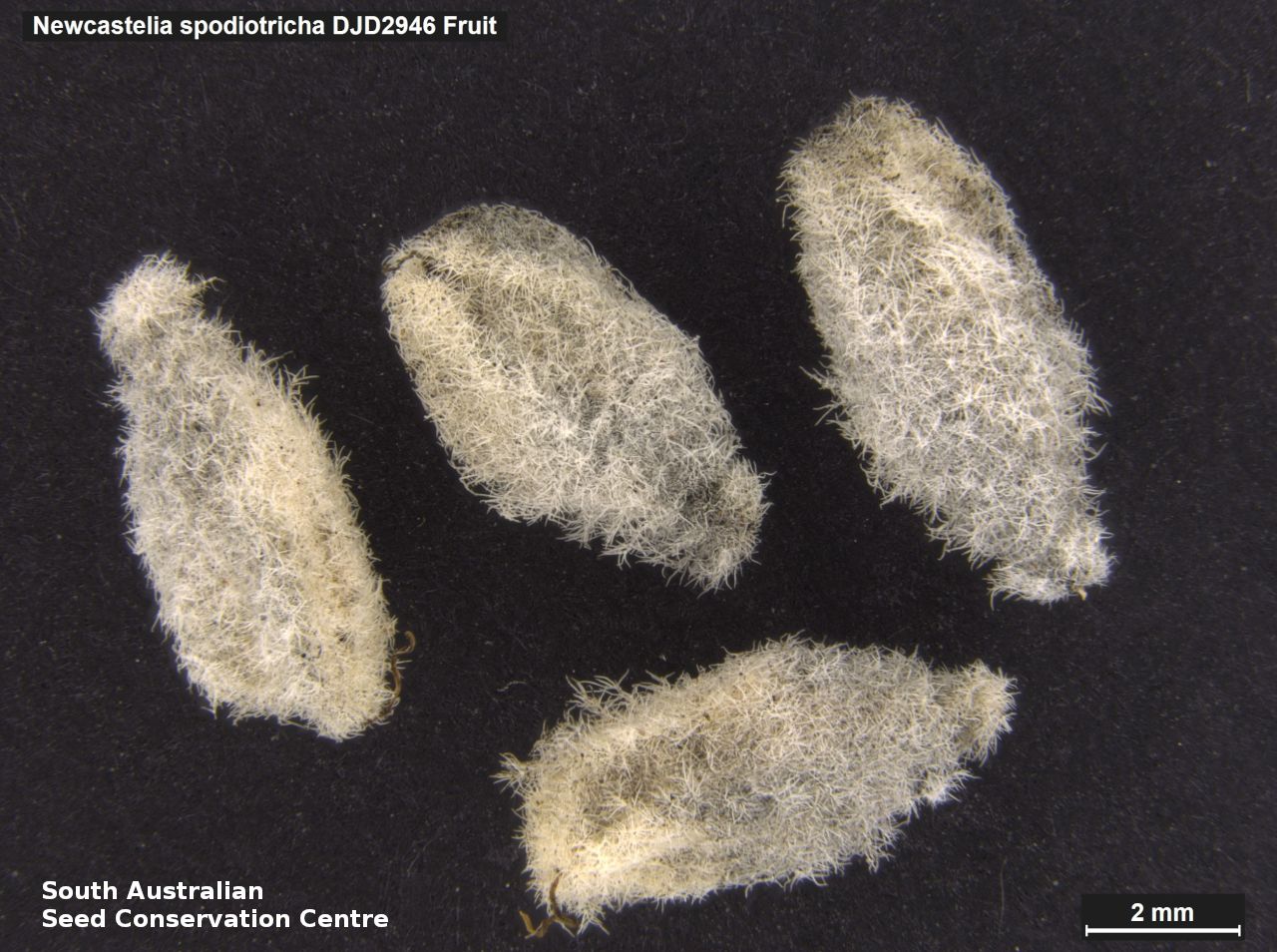
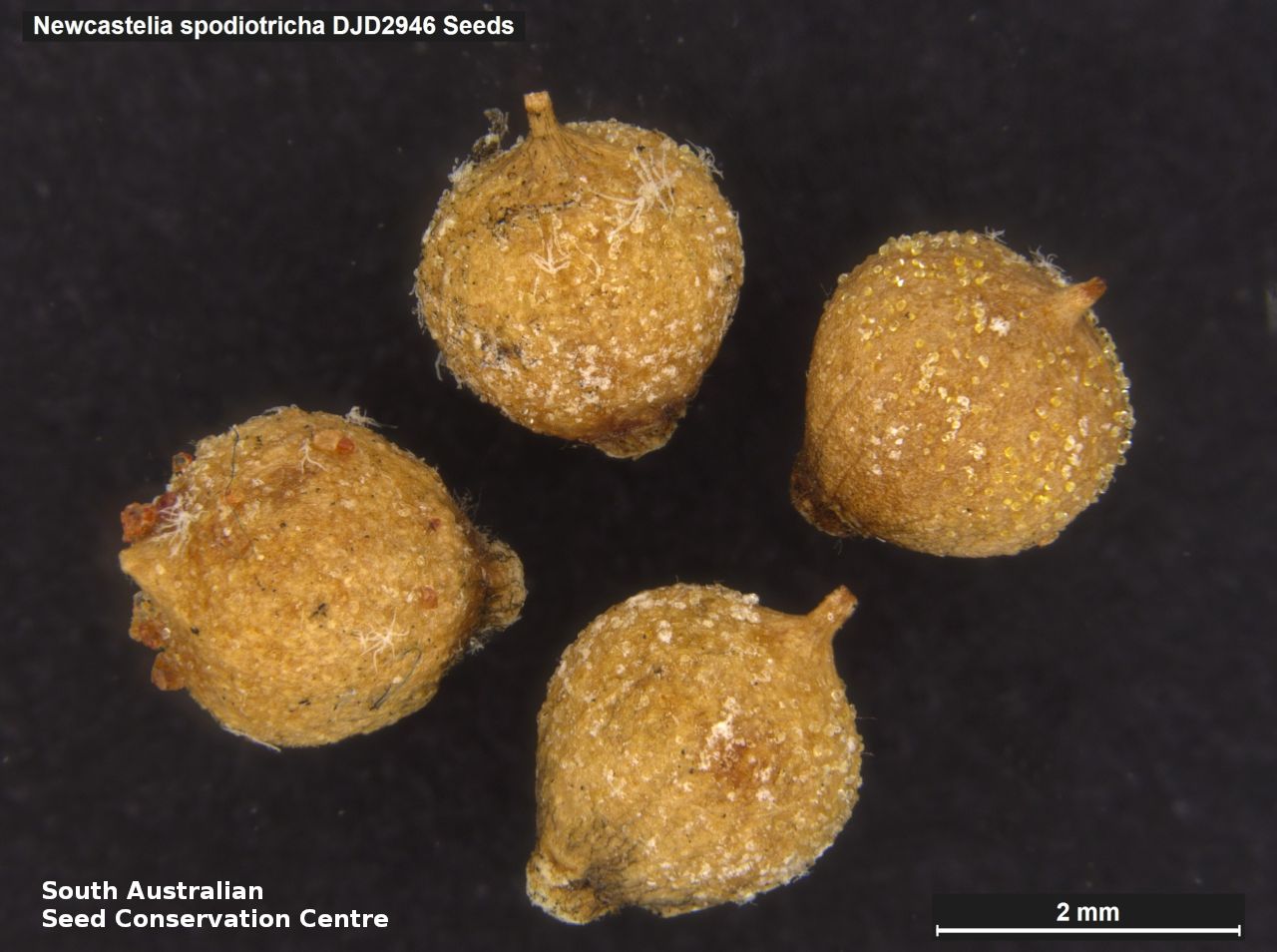


Botanical art
Prior names
Dicrastylis doranii, partly
Etymology
Newcastelia, named in honour of Henry Pelham Clinton, 5th Duke of Newcastle (1811-1868), who was Secretary of State for the Colonies between 1852 and 1854, and supplied funds for the north-western Australian Government Expedition of 1855. Spodiotricha, from the Greek 'spodios', meaning ash-colored, grey and 'thrix', meaning hair, referring to the species grey appearance due to hairs on the stems, leaves and buds.
Distribution and status
Found scattered in the north and north-western parts of South Australia, growing on sand dunes. Also found in Western Australia, Northern Territory and Queensland. Native. Uncommon in South Australia. Rare in Queensland. Common in the other States.
Herbarium regions: North Western, Lake Eyre
NRM regions: Alinytjara Wilurara, South Australian Arid Lands
AVH map: SA distribution map (external link)
Plant description
Erect grey shrub to 2 m high, with branchlets covered in dense grey hairs. Leaves to 6.5 mm long and 3 mm wide; broad-ovate to elliptic-ovate with broadly revolute margins; covered in dense short greyish hairs, with major veins conspicuous underneath. Flower-spike terminal, cylindrical-shaped,;covered in greyish hairs with 5 to numerous blue flowers. Flowering between September and December. Fruits are white-grey woolly obovoid to globose fruit. Seeds are brown globular seed to 3 mm long and 2 mm wide.
Seed collection and propagation
Collect seeds between December and February. Collect mature fruit-heads turning a straw-colour. Rub the fruit with your hands to see if there is any mature seed, before collecting. Collect by breaking off the whole fruit spike. Place the fruit-spikes in a tray and leave to dry for two weeks, then rub the capsules gently by hand or with a rubber bung, to dislodge the seeds. Use a sieve to separate the unwanted material. Store the seeds with a desiccant such as dried silica beads or dry rice, in an air tight container in a cool and dry place.